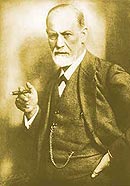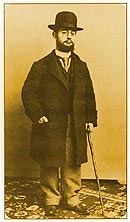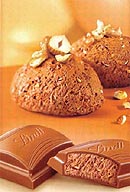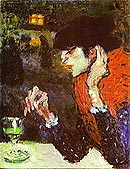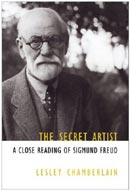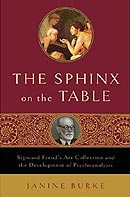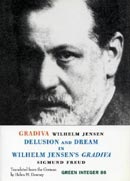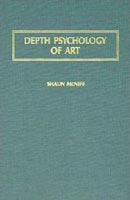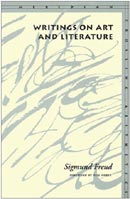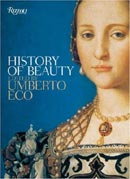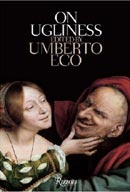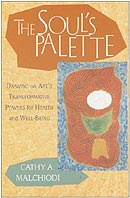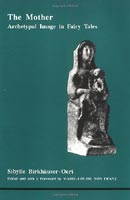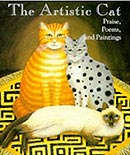HERITAGE:
keeping with historical continuation
in the old town
At
different points of the past centuries, various enterprises were located in
this house on 10 Chancery Lane, such as a Tobacconist Shop, Book
Store, and the famous Shelly Bistro. Now here is a Gallery.
Yet, with the temptation of keeping with historical continuation in the old
town, there is an attempt to recreate an allusion to the past. Thus in the gallery
you still may buy a book, a cigar, or some
fine dessert, or even get a drink. Understandably, though,
here you will only find items associated with Art & Psychology and linked
to the decadence of the bohemian Montmartre at the turn of the previous centuries.
Chancery
Art Gallery
TABACCONIST
Sigmund
FREUD
once confessed: "[cigars have] served me ... as protection and
a weapon in the combat of life... I owe to the cigar a great intensification
of my capacity to work and a facilitation of my self-control."
|
|
When his
nephew Harry, 17, once declined a cigar,
S. Freud noted: "My boy, smoking is one of the greatest and cheapest
enjoyments in life, and if you decide in advance not to smoke, I can only feel
sorry for you." (Freud: A Life for Our Time. Peter
Gay, 1989, Anchor Books/Doubleday).
Thus, some
believe that without cigars there may not have been Psychoanalysis.
Therefore, perhaps no Depth Psychology of Art...
Sigmund
Freud's favourite cigars, Reina Cubanas are no longer available. The
closest what we could find and offer here in Chancery Art Gallery is brand La
Gloria Cubana originally introduced in 1885. A superior quality line, La
Gloria Cubana cigars are renown for their very special qualities. Because
of their limited production in Cuba, they are hard to find, almost rare.
La Gloria Cubana
Medaille d'Or 2
Gauge: 43
Length: 170 mm (6 3/4")
Style: Medium
|
|
They have
a medium-bodied, earthy, fruity and slightly peppery flavors. A highly prized
vitola, their exceptionally smooth character and underlying sweetness make them
probably the best from the brand and very enjoyable cigars.
HISTORY
OF CIGARS
Chancery
Art Gallery
BISTRO
CHOCOLATE
MOUSE
(Mousse
au Chocolat) first known as “Mayonnaise de Chocolat”
was invented in the late 19th century by world-renowned French post-Impressionist,
bohemian artist Henri de Toulouse-Lautrec, also an experienced
cook.
|
|
Recipe:
Combine the egg yolks with the brandy and sugar in a stainless-steel
bowl set over simmering water. Whisk until the mixture is very warm. Add the
melted chocolate. Remove from the heat and whip until cool. In another bowl,
combine the egg white with the sugar and whisk. In another bowl, whip the
cream. Add one-third of the egg whites to the chocolate mixture, and gently
fold until incorporated. Fold in the remaining egg whites, then fold in the
whipped cream until just blended. Spoon into serving dishes, cover, and chill
for at least 3 hours before serving.
It
became a classic, traditional but still versatile dessert that can be
served in many different ways.
Here
in Chancery Art Gallery we offer Chocolate Mousse from Petits
Desserts prepared in Switzerland by chefs of the Lindt.
|
|
HISTORY
OF CHOCOLATE
ABSINTHE...
Authentic
bohemian drink popular in French cafes a century ago, intensively consumed
(and painted) by Van Gogh, Picasso, Monet, and highly respected by Hemingway...
|
|
Perhaps
because of its hallucinogenic effects, Absinthe was banned in
most of the Western World by 1915 and still
remains banned in many counties, including the United States and some
provinces of Canada (not Ontario, though).
Unlike the
cigars and dessert listed above, Chancery Art Gallery does not sell the Absinthe,
but serves it complimentary to the patrons who have purchased an artwork.
HISTORY
OF ABSINTHE
Chancery
Art Gallery
BOOKINIST
Books
are sold at cover price
The
Secret Artist:
A Close Reading of
Sigmund Freud
by
Lesley Chamberlain
|
|
The
Sphinx on the Table:
Sigmund Freud's Art Collection
and the Development of Psychoanalysis
by
Janine Burke |
|
Gradiva
and Delusion and Dream in Wilhelm J
by
Wilhelm Jensen,
Sigmund Freud,
and Helen Downey |
|
Depth
Psychology of Art
by
Shaun McNiff
|
|
Writings
on Art and Literature
by
Neil Hertz and
Sigmund Freud |
|
History
of Beauty
by
Umberto Eco
|
|
On Ugliness
by Umberto Eco
|
|
The
Soul's Palette:
Drawing on Art's
Transformative Powers
by
Cathy A. Malchiodi
|
|
The
Mother:
Archetypal image
in fairy tales
by
Sibylle Birkhäuser-Oeri
|
|
The
Artistic Cat
by
Running Press
Revenue
from this book
is assigned for the
animal shelter
of Bracebridge
|
|
